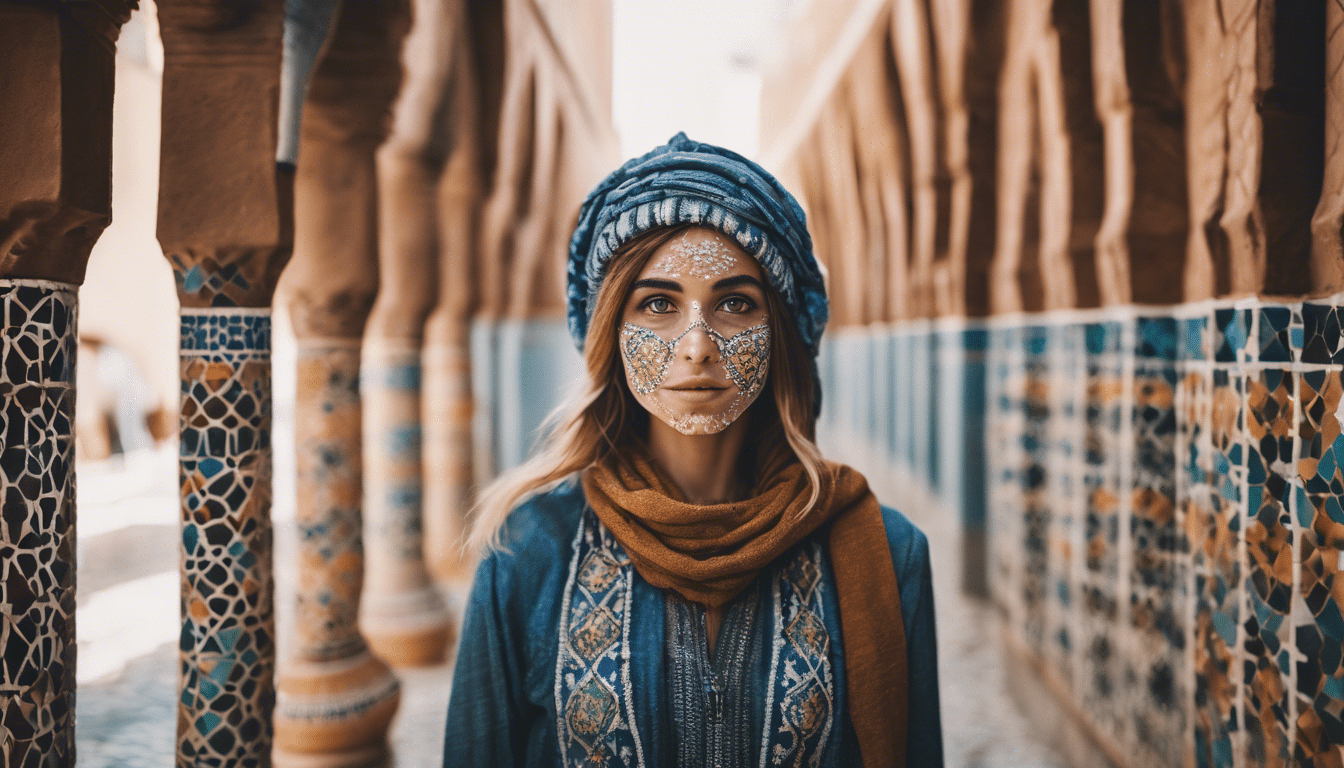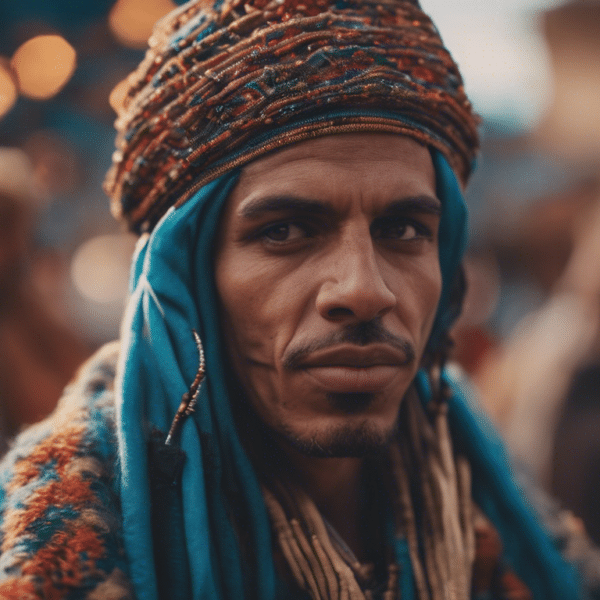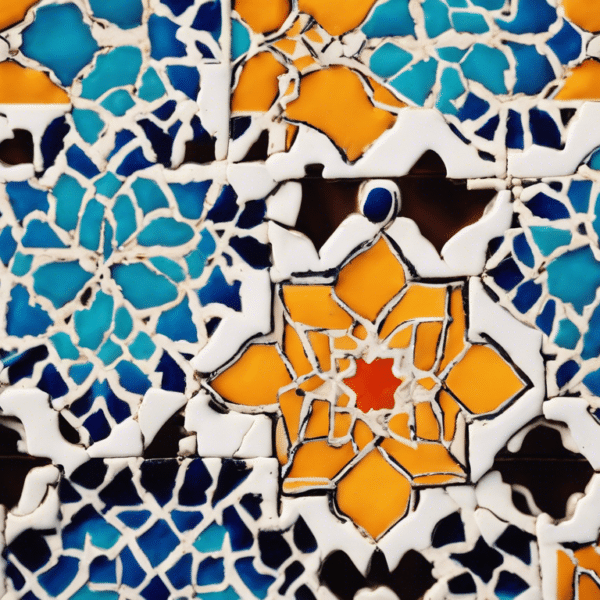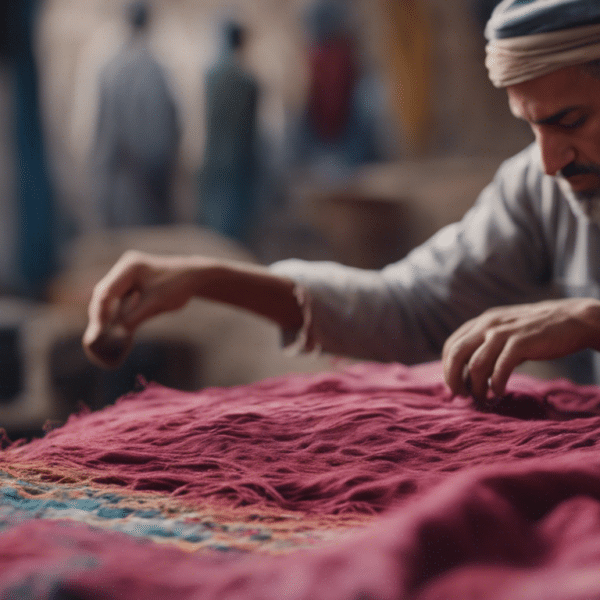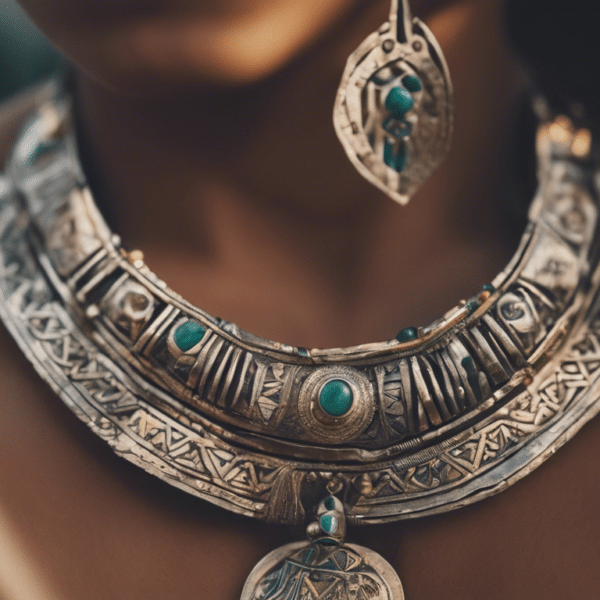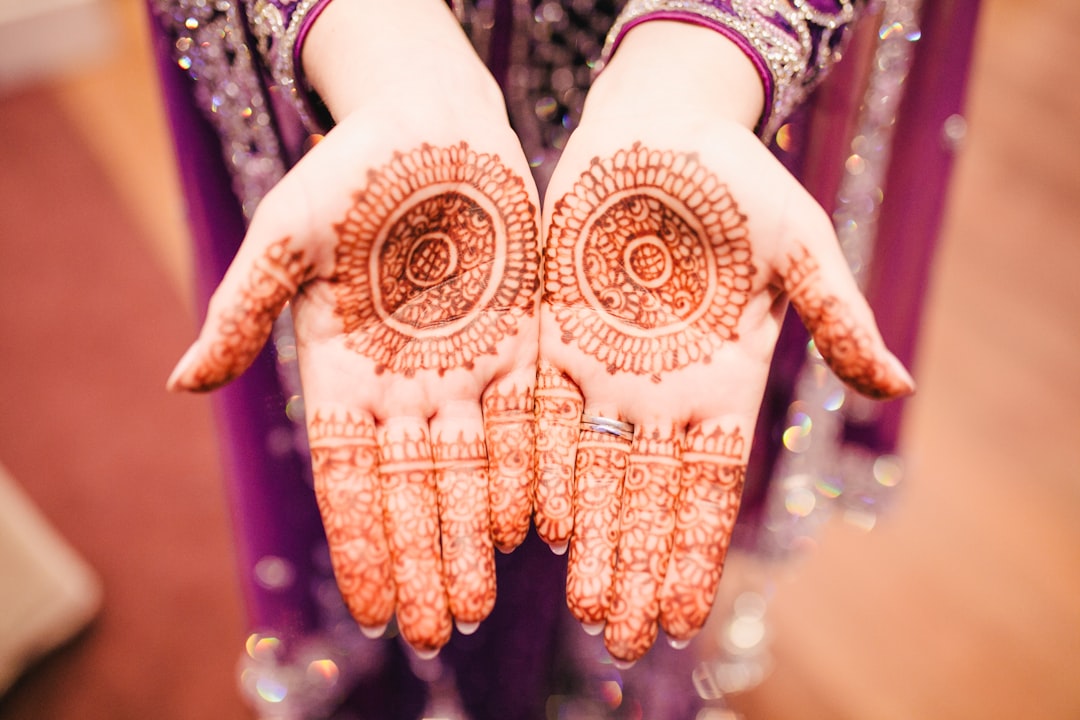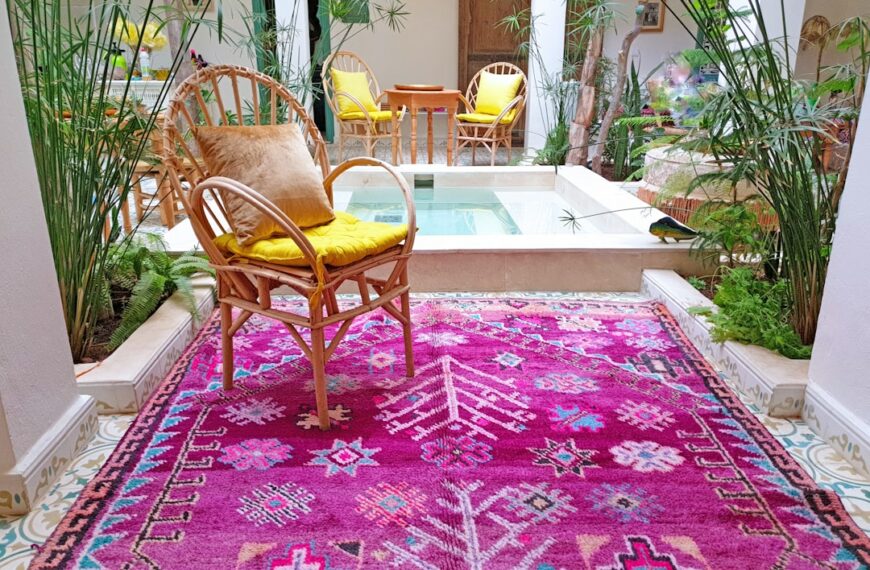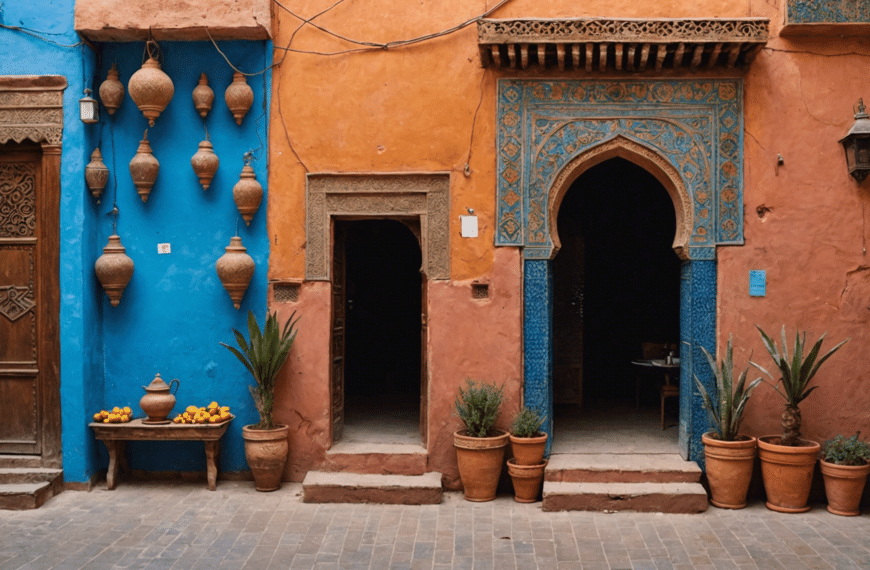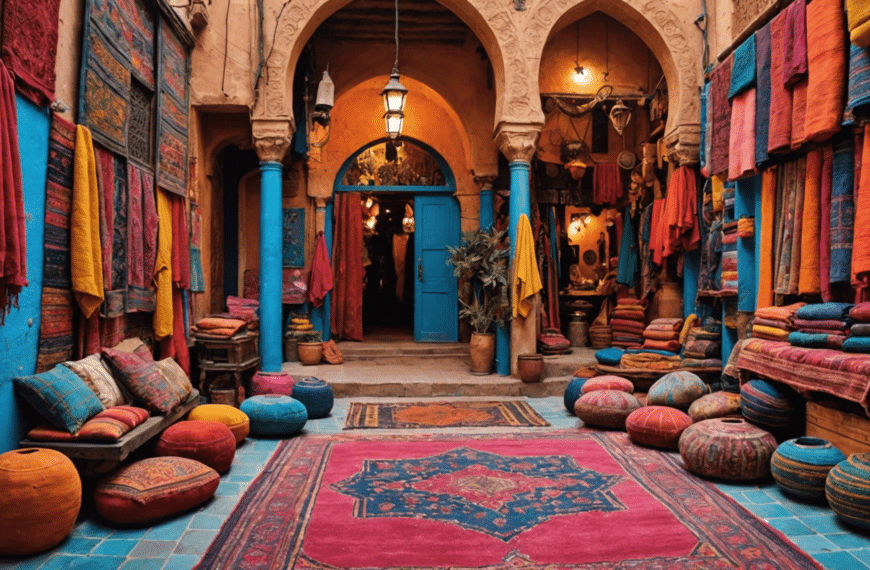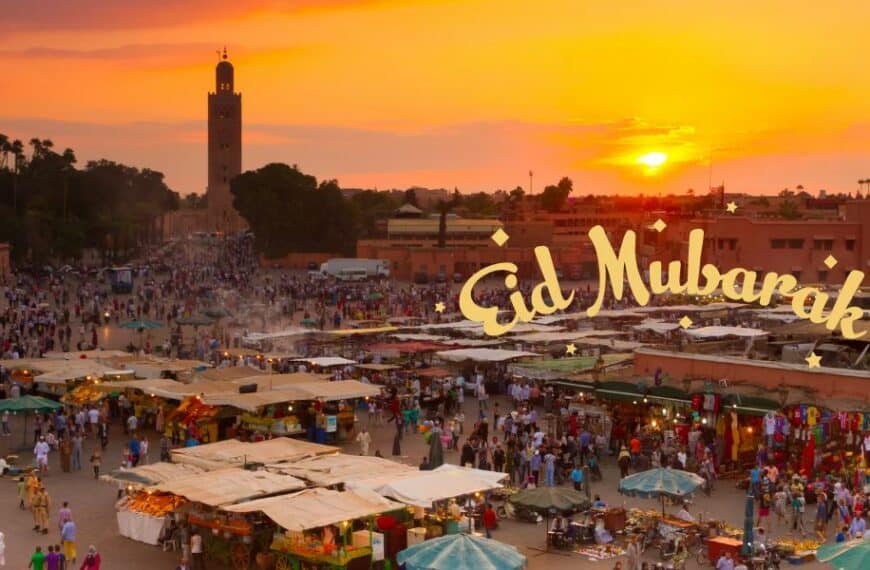The Enchantment of Zellij
As one meanders through the bustling streets of Morocco, the vibrant pulse of its culture breathes life into every corner, especially within the realm of traditional art. Among these, Moroccan mosaics, known as Zellij, are not merely decorative elements; they constitute a silent poetry inscribed in clay and color, narrating tales of craft, precision, and timeless beauty.
With origins that trace back to the 10th century, Zellij remains a testament to Morocco’s historical love affair with art and architecture. The geometrical assembly of hand-cut, glazed tiles doesn’t only pave floors and walls but also adorns fountains, tables, and more, creating a symphony of patterns captivating any aesthete’s eye. Understanding Zellij is to delve into an age-old tradition, spotlighting the meticulous process and the artisans’ dedication behind each masterpiece.
The Tapestry of Tiles
At the heart of Moroccan mosaics is the Fessi craftsmanship. Originating from Fez, the epicenter of this art, tile-making is a delicate dance of shaping and enameling that has been refined through generations. Each tile, or ‘zekri’, becomes a piece of a larger puzzle—a kaleidoscope born from the vibrant hues of indigo, emerald, saffron, and white. It is a craft that demands patience and precision, with artisans spending years mastering the skills necessary to breathe life into these intricate designs.
The motifs in Zellij are not random but charged with symbolism, ranging from architectural to spiritual significance. The patterns can embody the unity of existence through their interlocking shapes or replicate the rolling hills and flowing rivers of Morocco’s diverse landscapes. When exploring this rich tapestry, indulge in the visual storytelling that each pattern weaves, allowing each tile to speak its voice in a colorful dialect.
Witnessing the Mosaic Melody
Curating a mosaic is akin to composing a melody that resonates with harmony and balance. Crafting Moroccan mosaics is an orchestral operation where each artisan plays a vital role. From the tile-makers to the designers who sketch the elaborate blueprint, and the maâlems, master craftsmen, who tighten the final symphony of tesserae in place—it’s a carefully choreographed craft.
For those keen to witness this mesmerizing process, Morocco offers numerous opportunities to visit workshops and artisanal schools. Here, one can see the birth of Zellij, from raw clay to the polished final pieces. Many artisans welcome visitors to partake in the experience, offering workshops where you can try your hand at creating your own mosaic piece.
A Journey Through Mosaic Pathways
Venture forth into the imperial cities of Marrakech, Fez, or Meknes, and you will discover strong>palaces, madrasas, and mosques adorned with some of the most exquisite examples of Zellij. The Moulay Idriss Mausoleum and Al Quaraouiyine University in Fez, or the iconic Bahia Palace in Marrakech showcase this majestic art in situ, offering a first-hand perspective on the scale and complexity of Moroccan tile work. To step inside these historic sites is to wander through a living museum, an immersion in colour and pattern etched into the very soul of Morocco.
Moroccan mosaics are not solely a privilege of historical edifices. They also grace homes and public spaces, reaffirming the notion that beauty is integral to daily life. Whether in courtyard gardens or adorning the interiors of Riads, Zellij maintains its enchanting presence, a signature of Moroccan aesthetics.
From Heart to Hearth
Setting out to explore the beauty of Moroccan mosaics is not merely a journey for the eyes, but a pilgrimage for the soul. It’s an exploration that spans beyond the confines of museums or art galleries into the bustle of the médina, the heart of local craft markets where bespoke pieces wait to find a new home. For the intrepid collector or decor enthusiast, these markets offer an array of Zellij pieces, from intricate coasters to grandiose tables, ensuring that the magic of Moroccan artisanship can become a part of your own hearth.
Moreover, with sustainability and support for local crafts increasingly at the forefront, purchasing these mosaics becomes an act of preserving heritage and empowering artisan communities. Each piece of Zellij acquired is a stone in the mosaic of Moroccan history and culture, a tangible piece of its legacy.
In the intricate dance of shapes and colours that is Moroccan Zellij, one can find a universe of expression, craftsmanship, and deep-seated tradition. As intricate as it is expansive, as personal as it is universal, Zellij is not just an art form—it’s a beautiful defiance against impermanence, a testament to the human spirit’s creativity. Exploring its beauty is indeed a pathway to understanding the heart of Morocco.
What Makes Magical Moroccan Mosaics So Enchanting?
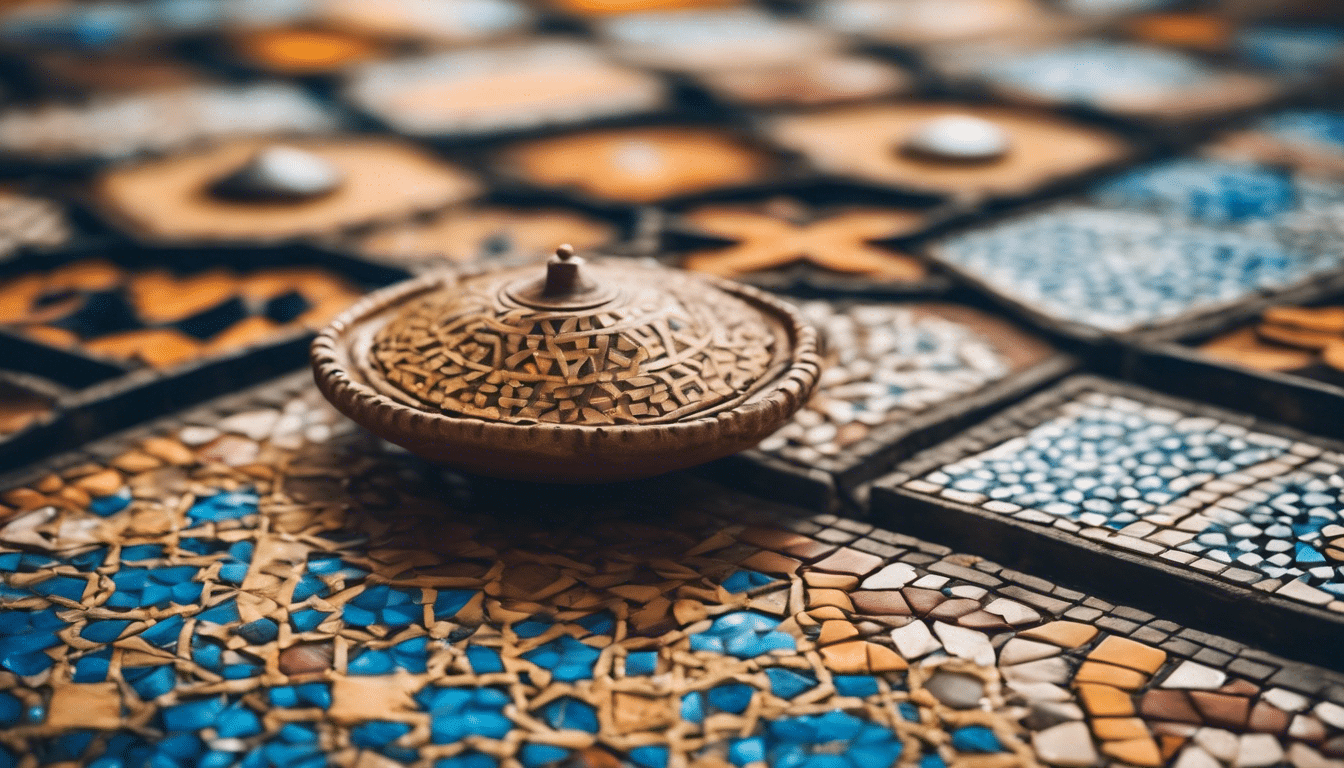
The allure of Moroccan mosaics is not a fleeting trend but a testament to a craft perfected over centuries, a spectacle of art harmoniously intertwined with culture. In the heart of Morocco, skilled artisans continue to forge breathtaking patterns that do not just adorn spaces but also narrate the story of an ancient artistic legacy. What exactly imbues Moroccan mosaics with a charm so potent that they have become an emblem of enchantment? Let’s delve deep into the essence of this mesmerizing craft.
The Symphony of Color and Design
In the vibrant cities of Morocco, from the bustling souks of Marrakech to the historic Fes medina, the Moroccan mosaic, or “Zellige” as locally known, reigns with its intricate patterns and vivid palette. Each piece of colored tile, carefully cut to precision, comes together to form an elaborate tapestry that is a feast for the eyes. The colors – often bold yet never jarring – are carefully chosen to reflect elements of nature and the region’s architectural heritage. Emerald greens emulate the lush gardens of the riads, azure blues mirror the Mediterranean, while the earthy tones embody the arid beauty of the Sahara.
The Art of Assemblage
But what truly sets Moroccan mosaics apart is the dexterity and technique involved in their creation. Each mosaic is an assemblage of meticulously chiseled zellige tiles, known as ‘Feskha,’ which are pieced together like a jigsaw puzzle without the guide of a sketched pattern. The artisans, ‘Maâlems’, employ time-honored methodologies that have been passed down through generations. Their expert hands breathe life into the tessellated designs, which are often symbolic, representing concepts of wisdom, heaven or the infinite nature of life through mathematical precision and repetition.
The Durability of Craft
A characteristic often overlooked in the face of their beauty is the durability of Moroccan mosaics. Made from locally sourced clay baked in kilns and then glazed, these tiles are not only visually appealing but also built to withstand the tests of time. This robustness ensures that the mosaics serve not merely as decorative elements but as significant aspects of Moroccan architecture, lining fountains, adorning walls, and paving floors in various homes and edifices.
The Cultural Essence
The enchantment of Moroccan mosaics is inextricably linked to the cultural fabric of the nation. They are more than ornamental; they are reflective of a people’s history and beliefs. In palaces and mosques, they serve as form of reverence, in homes, they provide a personal oasis, and in public spaces, they are a canvas of communal identity. The motifs and patterns often have Berber, Arab, and Andalusian influences, underlining the cultural diversity and historical encounters behind these artworks.
The Personal Touch in Every Tile
The common thread that weaves through every piece of Moroccan mosaic is the personal touch of the artisan. Each tile bears the fingerprints of the maker, figuratively speaking, ensuring that no two pieces are ever the same. This personalized approach allows for a unique narrative to be threaded into the fabric of the mosaics, making every composition a standalone masterpiece.
Indeed, the magic of Moroccan mosaics lies in the convergence of artistry, durability, and cultural legacy. These stunning pieces are emblematic of a nation’s soul and the unspoken tales of its people, standing as silent witnesses to moments in time. They encapsulate a legacy of craftsmanship that continues to spellbind admirers across the globe, an enchantment that remains as timeless as the mosaics themselves.
The History and Origins of Moroccan Mosaics
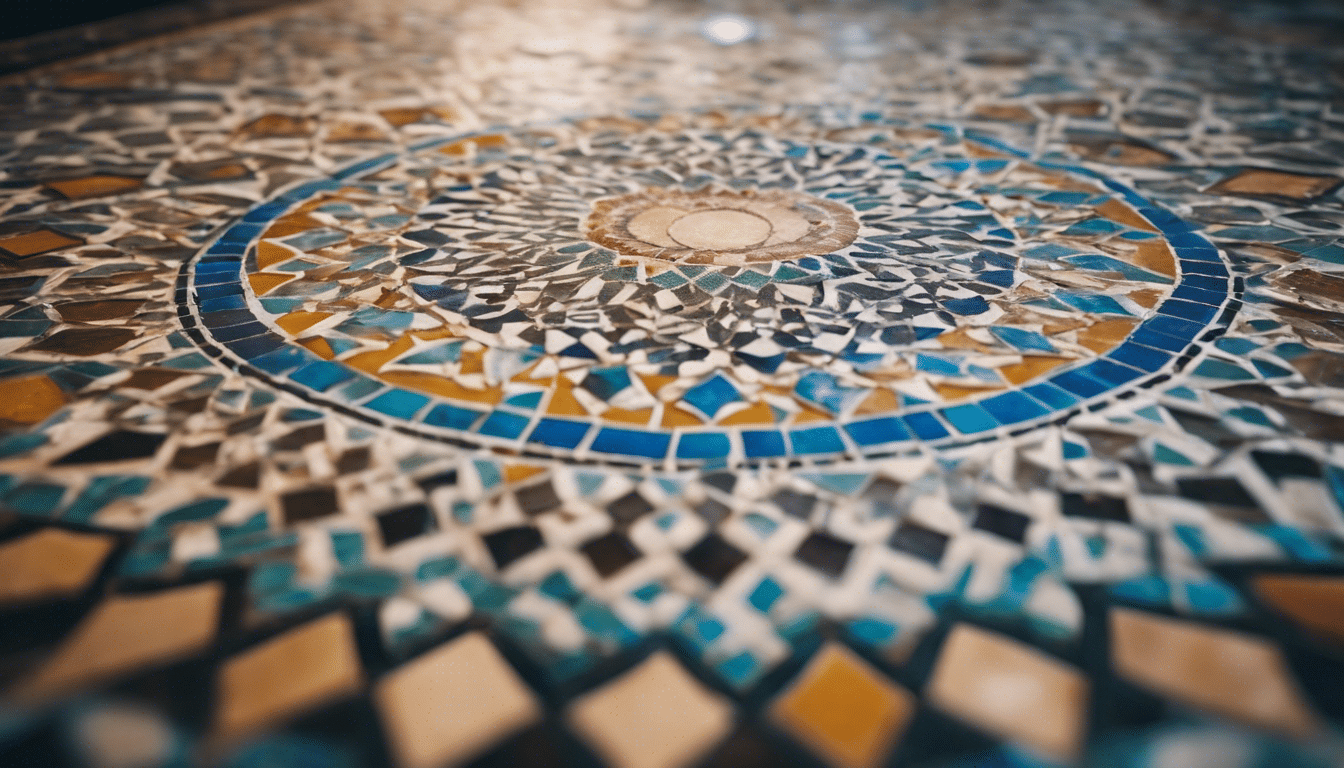
Moroccan Mosaics: The Enchantment of Zellige
Embark on a journey through time where the beauty of geometry and the mindfulness of craft interlace to create the timeless art of Moroccan mosaics. Also known as Zellige, these intricately patterned tiles reflect a cultural legacy that has been meticulously preserved and passed down through generations. Born from the earth and fire, these tiles tell stories of ancient civilizations, showcasing the artistic ingenuity of Moroccan artisans.
Roots in Andalusian and Islamic Artistry
The origins of Moroccan mosaics trace back over a millennium, with strong influences stemming from Andalusian and Islamic art forms. It was during the peak of the Moorish empire that the art of Zellige found fertile ground in the Moroccan soil. Court artisans, known as ‘Maâlems’, honed their skills in geometry and design, drawing inspiration from Islamic calligraphy and mathematical precision inherent in Islamic architecture, culminating in the mesmerizing patterns known today.
The Geological Canvas of Moroccan Mosaics
Fez, the cultural heart of Morocco, stands at the epicenter of Zellige production. Blessed with abundant deposits of quartz and colored clays, the region provides the quintessential raw materials for tile-making. Under the scorching flames of the kiln, these natural elements undergo a metamorphosis, emerging as vibrant tiles ready to be hand-chiseled into intricate mosaics. Artisans meticulously slice each tile into precise geometrical shapes, unveiling a kaleidoscope of colors once they are joined to form larger patterns.
The Maâlem: Guardians of an Ancient Craft
The Maâlem, a term which bestows respect upon the mastery of Zellige artisans, are the true custodians of this craft. Their dedication transcends mere occupation; it is a lifelong commitment to a form of creative expression that is inherently Moroccan. Throughout the centuries, these master craftsmen have preserved the techniques and secrets of their trade, ensuring the art’s survival. Their contribution to Moroccan mosaics is not just the preservation of technique but also the constant evolution of design.
Symbolism and Storytelling through Tiles
Every mosaic tells a tale, encapsulating symbolism within each tessellation. Colors play a crucial role, with each shade representing a facet of Moroccan life and the natural landscape—from the deep blues of the Mediterranean Sea to the earthy reds of the Atlas Mountains. The tesserae, though individually minimal, come together in collaboration to narrate a greater story—a story that reverberates with historical and spiritual resonance.
Zellige in Modern Spaces: A Touch of Heritage
In contemporary times, the allure of Moroccan mosaics remains undiminished. Modern interior designers and architects incorporate Zellige in a variety of spaces, infusing a touch of heritage into modern aesthetics. This craft’s adaptability showcases Morocco’s rich cultural tapestry and opens a dialogue between past and present, leaving a captivating imprint within global design landscapes.
The journey of Moroccan mosaics is an odyssey that charts the course of history, art, and human ingenuity. By delving into the history and origins of Zellige, one gains not just knowledge of a craft, but insight into a culture that values beauty, precision, and storytelling. The tiles of Morocco, ensconced in centuries-old traditions, continue to command adoration and evoke awe, transcending borders and capturing the hearts of art enthusiasts and connoisseurs around the world.

